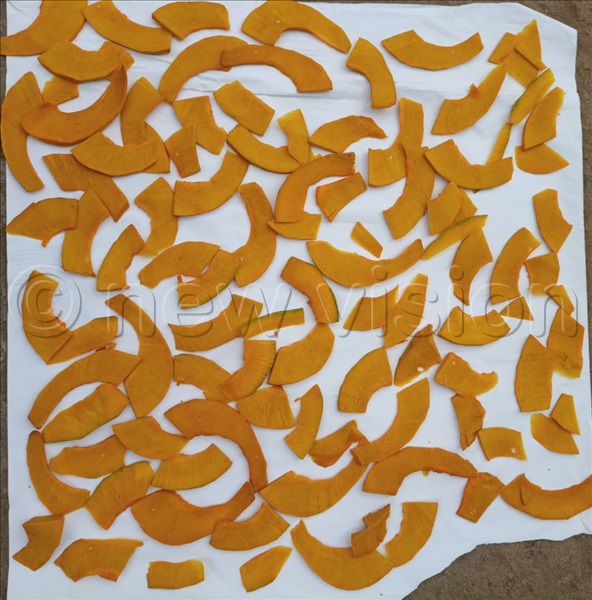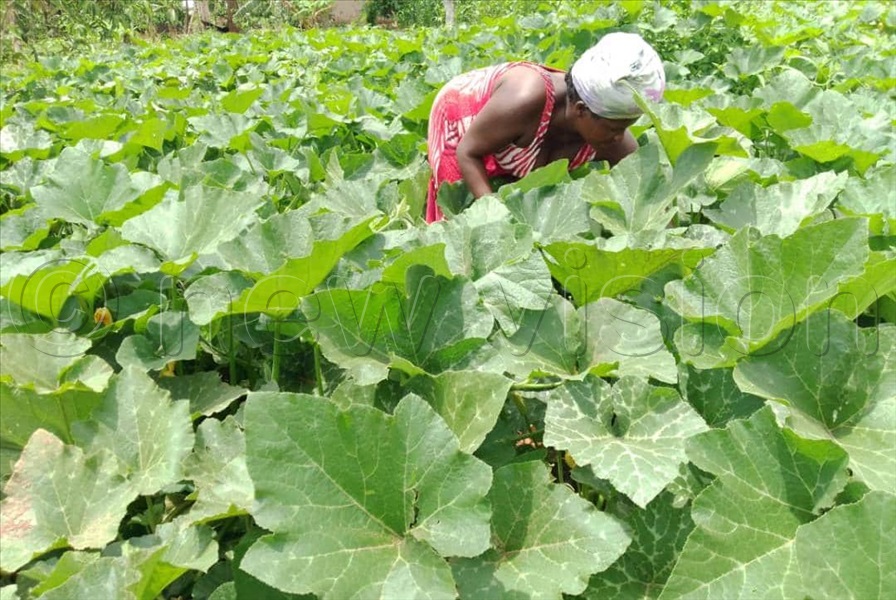By Andrew Masinde
To many, pumpkins are consumed directly through cooking.
However, when they are in plenty, many end up making losses as they get rotten very fast.
Betty Bategeeza is a pumpkin farmer in Bukola village, Namutunku parish, Maanyi sub-county Mityana district.

She has been growing pumpkins for years and her main market has been the local community.
She, however, says that on many occasions she has made losses, especially when they were in surplus.
“I did not know that I can add value to pumpkins. Even I could not imagine the taste of processed pumpkin,” she says.
However, recently Bategeeza got to know that she can add value to pumpkin and it would increase its longevity but also its value.

She was among the many farmers who received training on value addition for pumpkins.
The farmers were trained by Christine Ategeka, the knowledge transfer officer for East-West Seed.
According to Ategeka, much as pumpkins are directly consumed through cooking, there are other ways in which they can be preserved to diversify the different ways through which they can be consumed.

She says that if a value is added, then in times of food scarcity, processed pumpkins would play a big role in feeding families.
Some of the skills farmers received were roasting pumpkin seeds.
According to Ategeka, these are extracted from the fruits and then dried naturally using the sun or solar driers.
After drying, these are roasted and packaged in different containers or paper bags for sale.
She also says that from the pumpkins, farmers can extract wine. The pulp is sliced into small pieces and mixed with hot water for three days to allow fermentation.
It is then placed in a fermenter, mixed with other additives like sugar and yeast, and left to ferment for as long as possible to make fine wine, the longer the time, the better the wine.
A farmer can also make porridge.
According to her, to make the floor, you slice the pulp into small pieces for easy drying either under the sun or use a solar drier. After drying, it is pounded to make powder which is packaged into paper bags or containers.
“The leaves can also be dried after cutting them into small pieces and then pounded to make powder. This can be added into hot water, groundnut or beans soup to make it thick,” she says.
She adds that you can also make juice, the pulp can be crushed using a blender to make juice out of it, and the juice can be kept with preservatives or taken immediately.
Indeed, adding value preserves the pumpkins, provides other means of consuming the pumpkins and adds revenue as well.
Nutrition values
Ategeka says that pumpkins are a great source of beta-carotene, the body converts it into vitamin A which is good for the eyes.
The other vitamins are E and iron which boost the immunity of the body.
It also has anti-cancer components which are good for the body, especially in men (prostate cancer). The seeds are a great source of magnesium which regulates blood sugars and pressure.
The potassium in the powder aids the bone health of the body and also lowers the risk of stroke and kidney stones.





